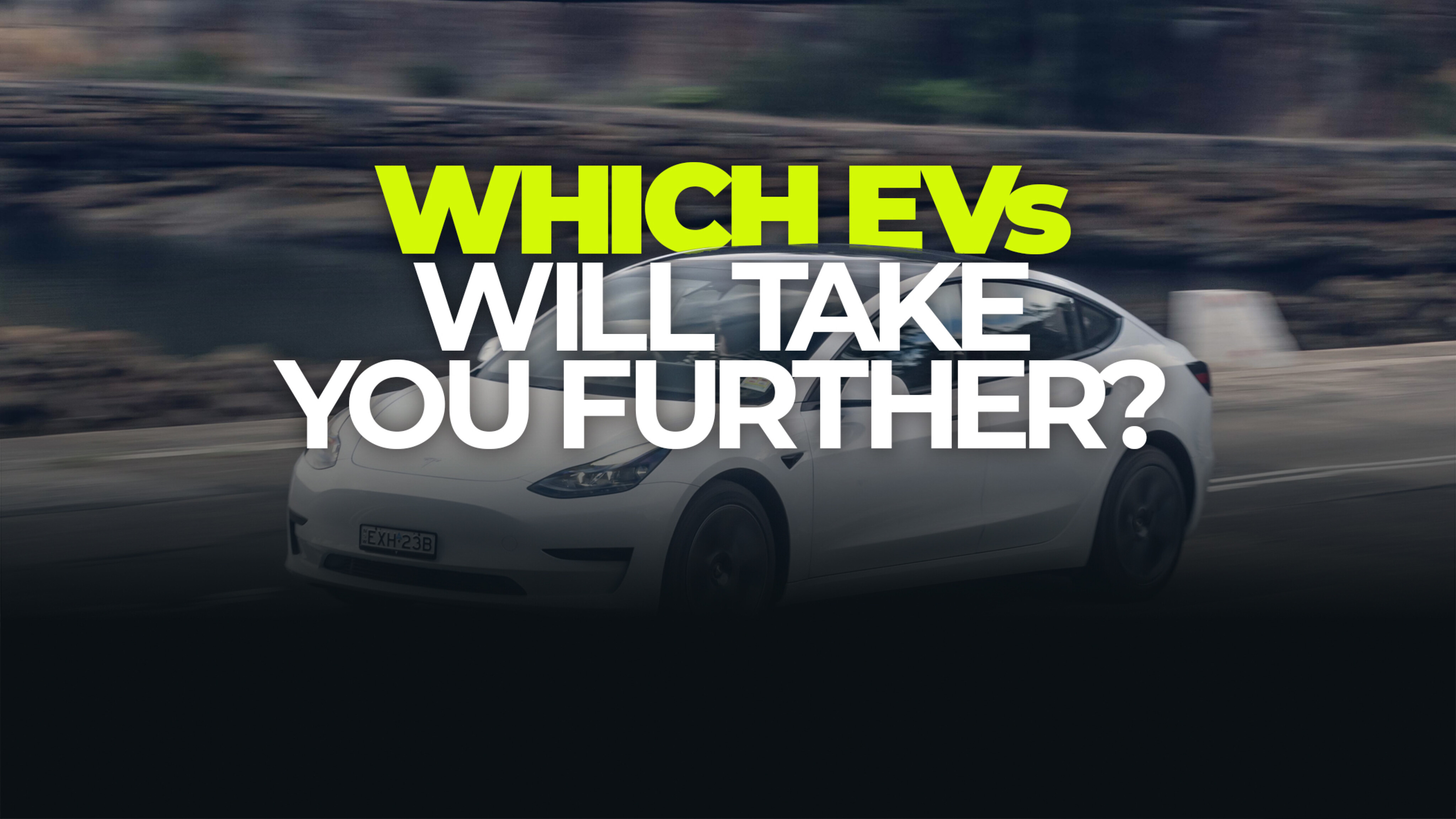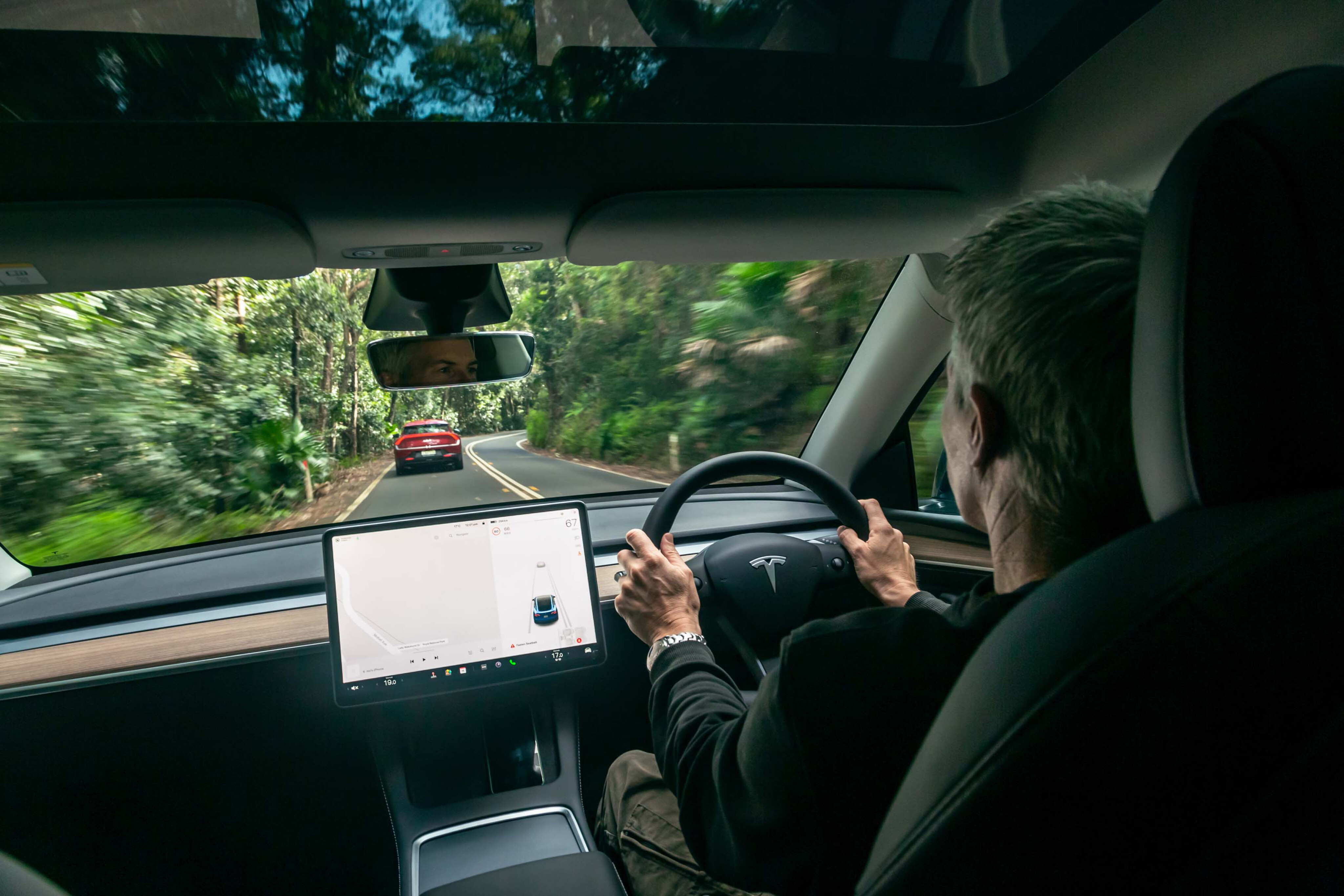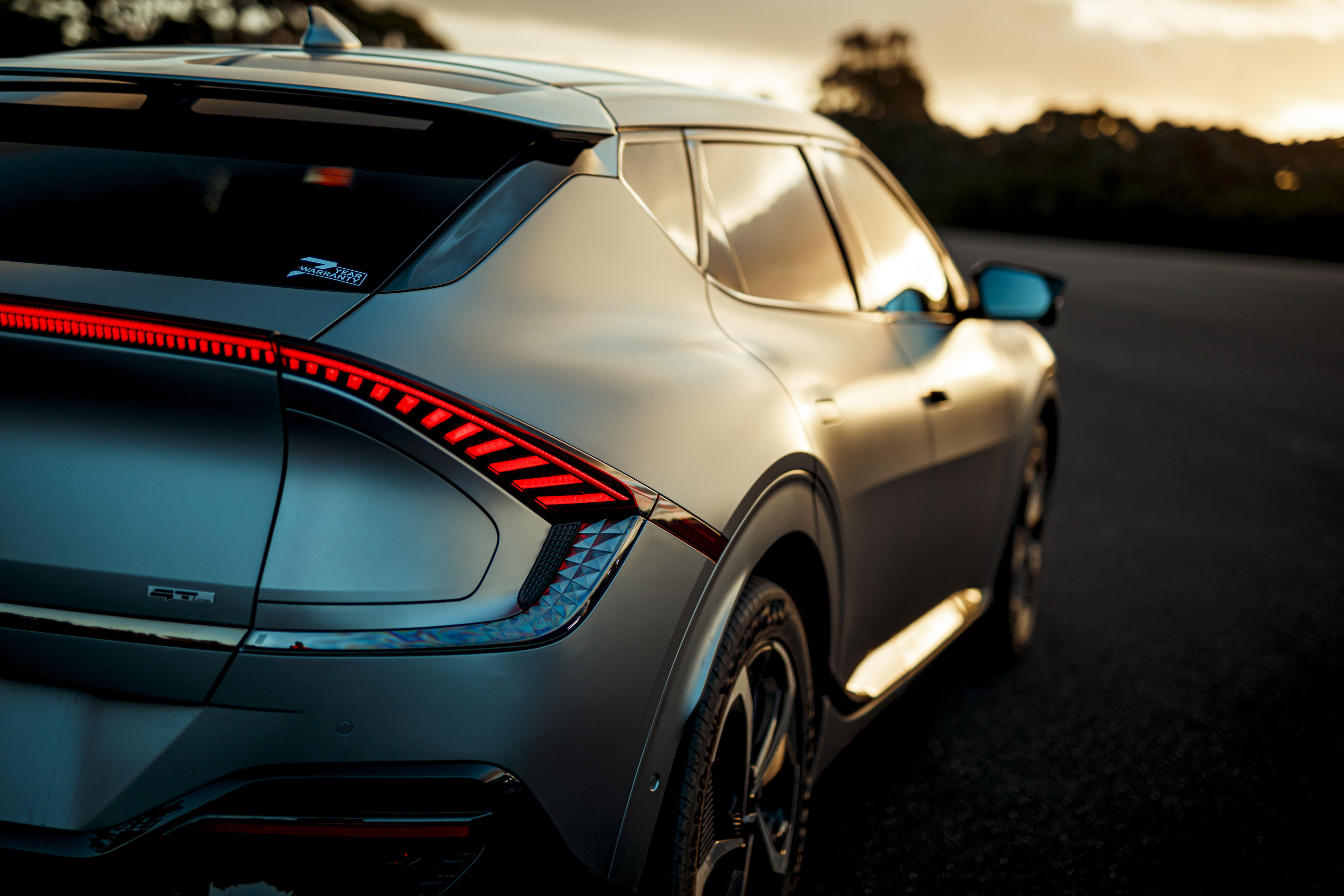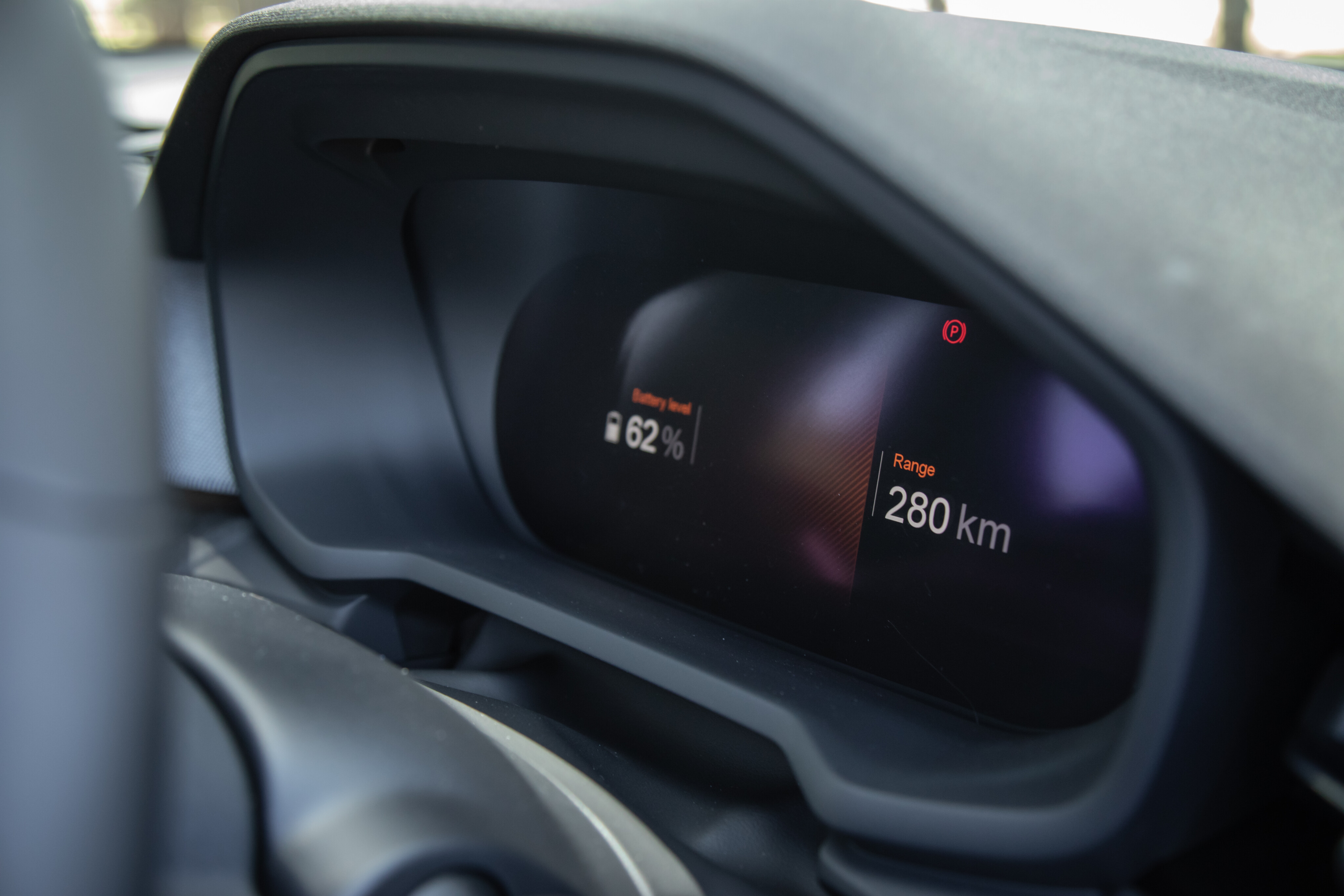
So-called driving ‘range anxiety’ is a key perceived concern for Australians considering the electric vehicle switch. But, in reality, most models provide more than enough range for many – and it’s extending with new EVs.
Snapshot
- Higher price doesn’t always mean longer range
- Real-world driving range depends on a variety of factors
- Longer range mainly provides owner’s more confidence
Range – the distance an EV can travel on a single battery charge – remains the key factor important to most buyers, whether they’re choosing a budget-friendly BYD Atto 3 crossover SUV to a high-end Porsche Taycan sports sedan.
It’s especially a concern for Australians, even though the average motorist drives around 30 to 40 kilometres per day, according to the Australian Bureau of Statistics [↗].
Yet, range is still a perceived barrier, with many Australians traversing this large nation for the odd road trip – when current battery technology simply can’t deliver the same range as many petrol or diesel-powered vehicles, and when current public EV charging infrastructure is still patchy (but quickly growing).
JUMP AHEAD
- 🤔 What determines range?
- 🛣️ What does real-world range mean?
- ⚖️ What's the best value-for-range EV?
⚡️ Top 20 longest-range EVs in Australia
- 🤔 Time to make the electric switch?

🤔 What determines an EV's driving range?
EV driving range is mainly dictated by the usable (net) battery size and energy density, vehicle design (the aerodynamics of cutting through air), total weight, and the efficiency of the electric drive unit (power electronics module, transmission, and electric motor/s).
In other words, the price doesn’t necessarily mean it can go further on a single charge.
An in-demand large, boxy electric SUV with a gigantic battery pack won't have substantially more range than a less popular aerodynamic electric sedan with a smaller battery size – a dilemma which carmakers are contending with.
What is ‘WLTP’?
Car brands mainly quote European combined World Harmonised Light Vehicle Test (WLTP) figures – which is the strictest method available for testing electric driving range and efficiency.
However, WLTP claims still don't accurately reflect real-world driving range since it is conducted under strict controlled laboratory conditions at set speeds and may not account for factors, such as different weather temperatures and regenerative braking.
Other tests quoted by manufacturers may include; the New European Driving Cycle (NEDC), Australian Design Rule (ADR) 81/02, China Light-Duty Vehicle Test Cycle (CLTC), and the United States Environmental Protection Agency (EPA) test. All but the latter provide more optimistic range claims than WLTP, with the EPA regime biased towards inefficient highway driving.
As battery technology improves, car brands evolve electric drive units and designers maximise aerodynamic efficiency, newly-released EV models are improving and extending driving range capabilities.
It’s not limited to a new generation model either. For example, the facelifted 2024 Polestar 2 liftback has boosted claimed WLTP range by between 54 to 104 kilometres thanks to a new electric motor that’s moved from the front to rear axles for single-motor variants – improving energy efficiency.
MG’s chief designer also believes electric SUVs will become lower and sleeker to maximise electric range – a trend that’s already demonstrated in models, such as the Tesla Model Y, Kia EV6, and Renault Megane E-Tech.

🛣️ What does real-world range mean?
The actual real-world driving range an EV can be impacted by factors such as; driving behaviour (eg: heavier acceleration), weather (i.e. low temperature, headwinds, rain), high speed, tackling inclines, and the use of air-conditioning.
Depending on how and where you drive, a general rule-of-thumb is to take about 10 to 20 per cent off the WLTP claim to estimate real-world range.
Also note that most carmakers recommend a charging limit for lithium-ion type batteries up to 80 per cent only to maintain good battery health and avoid prolonged charging wait times, except for situations when a full charge is necessary such as on long-distance trips.
Anything more than 300 kilometres should provide more than enough electrons for the average Australian weekly commute.
However, unlike combustion-engine powered cars, electric cars are more efficient and achieve better driving range when used in urban low speed, stop-start traffic conditions – since regenerative braking helps recoup some energy back into the battery.
How much range do you really need?
According to the Australian Bureau of Statistics [↗], the typical motorist drives between 30 to 40 kilometres per day and, based on 2021 Census data [↗], at least 83 per cent of homes have access to off-street parking (presumably with a three-pin plug) to charge.
A longer range EV simply provides owner’s more confidence to reach destinations with fewer public charging stops on road trips – plus the assurance that, when the battery naturally degrades over time, the reduced range won’t be a major impediment to everyday driving needs.

⚖️ Looking for the perfect mix of range and price?
The story you're reading right now focuses on the furthest-driving EVs, regardless of price. Check out our story below to refine your list to the EVs that provide range for the best possible price.
⚡️ Top 20 EVs on sale in Australia, by driving range
These are the top-20 EVs available in Australia, or well on their way, with the longest WLTP driving range claims.
Yes, most are premium expensive models, but as battery material and mining costs lower, more mainstream EVs are emerging.
Ranking and figures are correct as at the time of publication based on manufacturer-quoted combined WLTP testing. Range numbers are based on full 100 per cent charge (which isn’t generally recommended for lithium-ion batteries).
*Model launching in Australia soon
- Polestar 2 Long Range Single Motor – 654km
- Mercedes-Benz EQS 450 4Matic – 631km
- Tesla Model 3 Long Range – 629km
- BMW i7 xDrive60 M Sport – 625km
- BMW iX xDrive50 Sport – 620km
- Hyundai Ioniq 6 Dynamiq RWD – 614km
- Polestar 3 Long Range Dual Motor* – 610km (or 560km with Performance Pack)
- Ford Mustang Mach-E Premium* – 600km
- Polestar 2 Long Range Dual Motor – 591km (or 568km with Performance Pack)
- BMW i5 eDrive40* – 582km
- BMW iX M60 – 566km
- BMW i7 M70 xDrive* – 560km
- Mercedes-Benz EQE 300 sedan – 550km
- Tesla Model 3 Performance – 547km
- Tesla Model Y Long Range – 533km
- Polestar 2 Standard Range Single Motor – 532km
- MG 4 Long Range 77 – 530km
- Kia EV6 Air RWD – 528km
- Mercedes-AMG EQS 53 liftback – 526km
- BMW i4 eDrive40 – 520km
🤔 Is it time to make the electric switch?
If you'd like to know the claimed driving ranges of every new EV on sale in Australia today – plus everything you need to know about electric cars – check out our comprehensive guides below.
More EV stories to help you choose the best car for your needs
🚘 EV news, reviews, advice & guides
- ❓ Short & sweet: Your EV questions answered
- ⚡ New EVs: Everything coming to Australia
- 🥇 Australia's EVs with the longest driving range
- ⚖️ Best-value EVs by driving range
- 💰 How much do EVs cost in Australia?
- 😰 How much more expensive are EVs?
- ⚖️ Number crunching: Is it time to switch to an EV?
- ♻ Should you buy a used EV?
- 🛡️ Are EVs more expensive to insure?
- 🆚 Costs compared: Charging an EV vs fueling a car
- 📖 EV charging guide
- 🚧 Are there enough EV chargers in Oz?
- 👨🔧 EV servicing explained
- 🔋 EV battery types explained
- 🪫 When do EV batteries need replacing?
- 🆚 Hydrogen v EVs: What's best for Oz?
- 🌏 How sustainable are EVs, really?
MORE advice stories to help you with buying and owning a car
Wheels Media thanks David Bonnici for the original version of this story.
COMMENTS